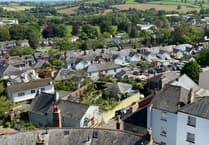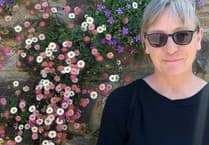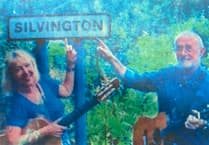FOLLOWING news that the badger cull is to be extended in the South Hams, a local retired farmer got in touch to explain the history of the relationship between badger populations, farmers and the spread of bovine TB.
The farmer, who spent decades farming land near Salcombe, explained that the impact of bTB on farmers has been ‘enormous, resulting in nearly 30,000 cattle being slaughtered in recent years. After the Second World War, bTB was a serious problem, both for farmers, but also the human population.’
In the 1930s, 40 per cent of cattle in the UK were infected with bTB, and there were 50,000 new cases of human infection every year. Cases of human infection fell due to widespread use of milk pasteurisation, but have seen a steady increase in recent decades. In the late 1960s, cases of bTB fell dramatically, but since the 1990s, cases of animal incidences have exploded, and now Great Britain has the highest rate of bTB in Europe. And many farmers link this to the explosion in badger populations since they became a legally-protected species.
The Badgers Act 1973 gave limited protection to the species, while the Protection of Badgers Act 1992 gave full protection of any interference with badgers or their setts, without a licence. The local farmer blamed the government for interfering in farmers’ natural control of species on their land: ‘It’s a classic situation of the government interfering. If it ain’t broke, don’t fix it.’
Before this, numbers were controlled by farmers themselves. The farmer claimed that after the war, there were three or four badger setts in the whole Kingsbridge and Salcombe area. Farmers used to dig out setts on a Sunday morning, but since the laws protecting the species, numbers have exploded, along with cases of bTB. And with no natural predator to keep numbers down, apart from motor vehicles, numbers are set to continue to grow without a cull.
The farmer estimated that 80 per cent of farmers in the South Hams are pro-cull, ‘Farmers have found sick badgers in feed yards, that have tested positive for bTB,’ he said. To be part of the cull, Natural England charge farmers £1 per acre and £4 per cow.
‘It’s a difficult situation, because since badgers have been legally-protected. Now farmers have to pay to try and control badger populations - and some farms can’t afford to take part in the cull.’
He emphasised that bTB isn’t just carried through badgers, but has also been found in deer. The cost in terms of disruption to farmers if a herd tests positive for bTB and goes ‘under restriction’ is enormous. The herd has to be tested every two months.
The farmer insisted that it was a misconception that farmers enjoyed killing animals. ‘Nobody wants to kill anything. You look after animals from birth to death, and develop a close connection to them, but to lose cattle to bTB is heartbreaking.’
With the cull set to begin at farms across the South Hams this week, a list of the farms that have signed up has been leaked online through animal rights groups, and includes about 30 farms in the South Hams, including many in the Kingsbridge and Salcombe area. Farmers are now concerned that they will see intimidation tactics from protestors.
‘The antis have said they’re determined to upset out lives. One neighbour’s wife called to say that a white van had been parked outside their house all day. Following us contacting the police, they confirmed that the van belonged to anti-cull protestors. Devon and Cornwall Police are up to speed on the potential for protestors disrupting the cull, and have advised farmers to remain passive and non-confrontational. But we’re naturally worried about intimidation,’ he said.
Around 25 protestors wearing masks and carrying flags marched through the village of Ashprington near Totnes on Sunday. The protestors clashed with Ashprington parish councillor Laurence Green after they took over the village war memorial.
Ama Menec, who organised the Ashprington protest said: ‘The aim of the protest was to alert residents to the dangers that they were in, with the roll out of the cull because many of them do not know. Shooting can continue from sundown to 12 noon every day.’
The first Totnes anti-badger cull rally will be going ahead on Saturday, September 10, with a march from The Plains up through the main street to the Rotherfold, where Ms Menec will be addressing the campaigners.
Elaine Bailey, who took part in the first protest, said: ‘The reason that Ashprington was chosen for this, the first demonstration of many, was because a secret cull will be taking place on Ashprington Court Farm, which lies on the very edge of the village. Unfortunately Ashprington farm also borders on Sharpham lands, where all the badgers have been vaccinated for the past three years. This means that when Ashprington farm culls badgers they are in all probability killing healthy badgers immunised against bTB. Of course, we the public won’t be told whether the badgers were the immunised badgers or not, because unbelievably, there is no requirement to prove that culled badgers were, in fact, infected by bTB.’
Ms Bailey continued: ‘The demonstration was successful, for it brought news of the impending badger cull to the villagers and has announced to the South Hams district that this cull, across the estimated one hundred farms in the area, will be opposed by those who wish to protect the badger. The opponents of the cull also wish to inform the public of the scientific papers which prove that culling is ineffective and very expensive on the public purse - that the badgers will suffer in the process and that badger cubs will probably be left to starve if their mothers are killed. The badger was made a protected species in 1973, and still needs protection today.’
The Devon Wildlife Trust opposes the government’s badger culling programme, saying that ‘there is robust evidence that culling badgers will make the problem worse.’ A spokesperson said: ‘The DWT recognises the devastating impact that bTB has on farmers and rural communities. Staff and volunteers at DWT work every day with people who are affected by bTB and witness first-hand the devastating impacts this disease has on farming communities. DWT is also a landowner and relies on healthy livestock for conservation grazing to protect and restore threatened wildlife on many of our reserves. DWT opposes the cull because we believe that there are more humane, more cost effective and more sustainable ways of tackling this disease effectively and for the long term.’
But the National Farmers Union continue to support the cull as an effective method of tackling the spread of bTB. President Meurig Raymond said: ‘Bovine TB remains a huge threat to beef and dairy farmers in large parts of the country. More than 28,000 cattle were slaughtered in England last year because of it, and nearly 4,000 herds that had previously been clear of the disease were affected by it.
‘Farmers facing a daily battle against bTB in those areas that have been granted licences for badger control operations this year will welcome the news that finally action is being taken to tackle the reservoir of disease in wildlife in these areas. The announcement means that badger control will now be taking place in ten per cent of the area where cattle are at the highest risk of contracting bTB.
‘There is still a huge amount of work ahead to ensure the eradication of bTB from this country. The chief vet has made it clear that dealing with the disease in both cattle and badgers is essential to tackling the disease effectively and that proactive badger control is currently the best available option for dealing with the disease in badgers.
‘The number of areas that have expressed interest in carrying out badger controls in future years not only shows the sheer extent of the bTB problem farmers are facing, but also the industry’s continued commitment to playing its part in tackling this devastating disease.
‘We have always said that we must use every option available to tackle bTB, including cattle testing, cattle movement controls, improving biosecurity, and encouraging farmers to make informed decisions when buying cattle in from other areas. We will consult with our members before submitting our response to the consultation on introducing further cattle measures, including more severe skin tests for herds in the area at greatest risk from bTB and increased surveillance testing for all herds in the areas on the edge of the disease spread.
‘The NFU has always said that control of bTB in non-bovine animals has to be part of any strategy to tackle the disease so we welcome the consultation on introducing further disease control measures for these species.’




